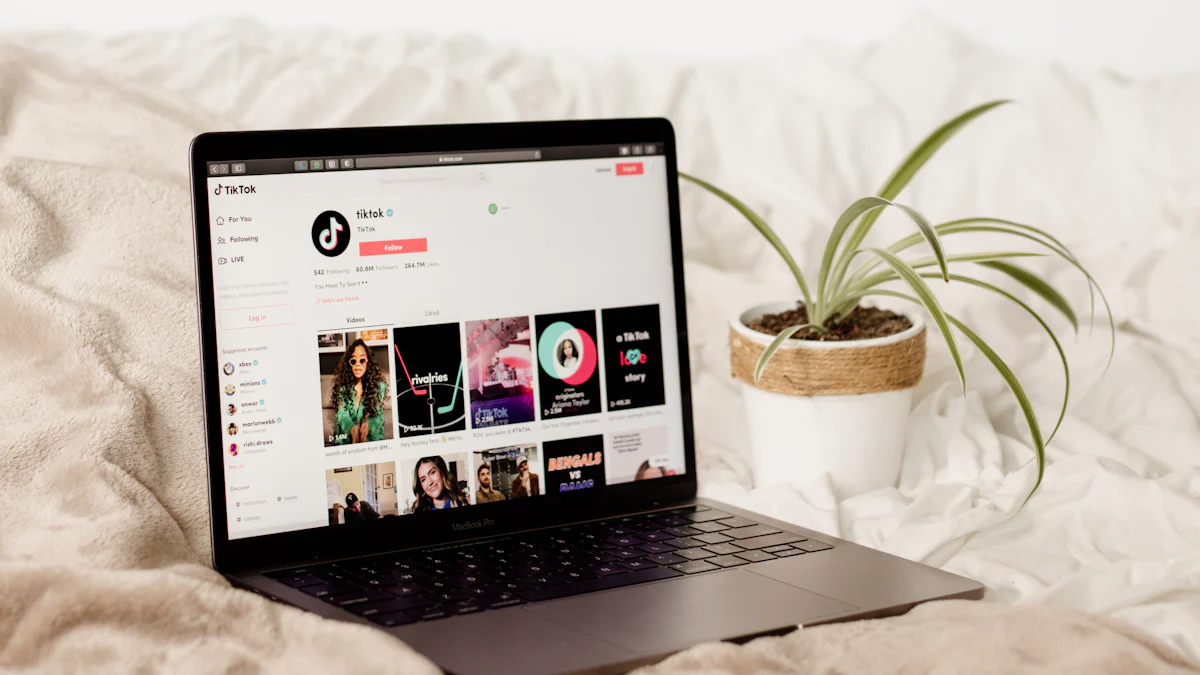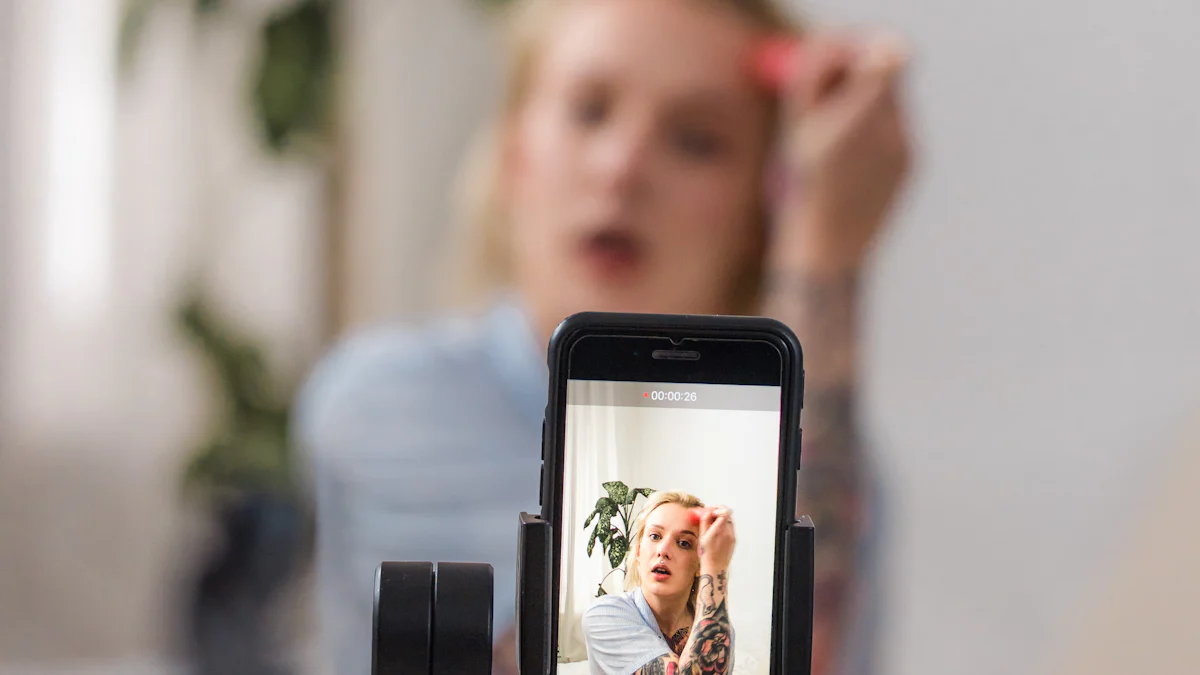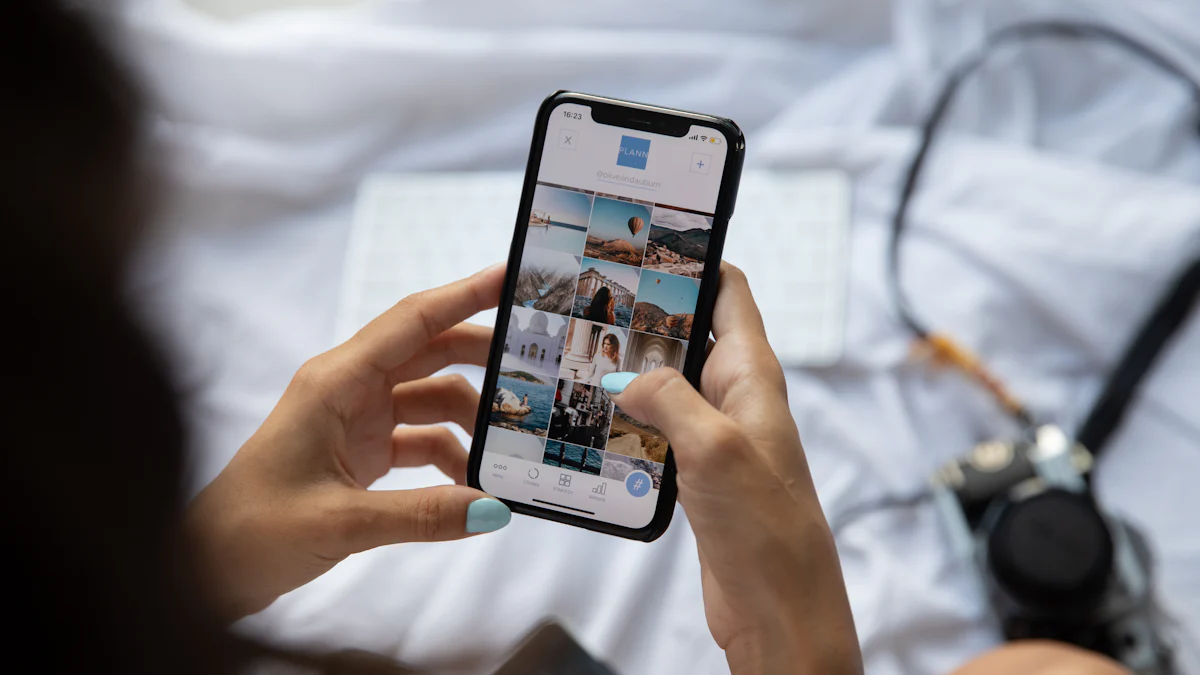10 Actionable Influencer Marketing Tactics to Boost Brand Awareness in 2025

Influencer marketing has become a game-changer for brands in 2025. Why? Because it builds trust, drives engagement, and delivers results that traditional ads can’t match. Did you know 69% of consumers trust influencers’ recommendations, and influencer marketing generates 11x the ROI of banner ads? With brands projected to spend $9.29 billion this year, it’s clear this strategy is here to stay. But staying competitive means using the right influencer marketing tactics. By adopting proven methods, you can connect with your audience authentically and see measurable growth. Ready to take your brand to the next level?
Understanding Influencer Marketing and Its Impact

What Is Influencer Marketing?
Influencer marketing is a social media strategy where influencers promote products or services through endorsements and mentions. But what exactly is an influencer? It’s someone who can sway opinions and influence purchasing decisions. In the past, this role was limited to celebrities. Now, thanks to social media, anyone with a loyal following can become an influencer.
Over the years, influencer marketing has evolved. It’s no longer just about flashy ads or big names. Today, it’s about authenticity. Influencers build real connections with their followers, making their recommendations feel more genuine. This shift has made influencer marketing one of the most effective ways to reach your audience.
How Influencers Drive Brand Awareness and Engagement
You’ve probably seen influencers unbox products or share tutorials on social media. These aren’t just fun videos—they’re powerful tools for driving brand awareness. When influencers showcase your product, they create excitement and trust. Their followers see the product in action, which makes them more likely to buy it.
Take Miro, for example. They worked with influencers to show off their templates, which boosted engagement and conversions. Or Fiji Water, which partnered with fitness influencer Danielle Bernstein for a workout campaign. The result? A huge increase in visibility and engagement.
Influencers also host contests, giveaways, and even social media takeovers. These strategies bring in new followers and keep your audience engaged. It’s all about creating buzz and making your brand memorable.
Why Influencer Marketing Is a Must-Have Strategy in 2025
In 2025, influencer marketing isn’t optional—it’s essential. Almost half of consumers make monthly purchases because of influencer posts. And 86% of people buy something inspired by an influencer at least once a year.
The industry is booming, with projections reaching $24 billion in 2024. Why? Because influencers help brands connect with their target audience in a way that feels personal and trustworthy. If you want to stay competitive, you need to make influencer marketing a core part of your strategy.
10 Actionable Influencer Marketing Tactics
Partner with Micro-Influencers for Authentic Engagement
Benefits of Micro-Influencers for Brand Awareness
Micro-influencers are a goldmine for driving brand awareness. Why? They’re affordable, authentic, and have highly engaged audiences. Unlike macro-influencers, they focus on niche communities, which means their followers are genuinely interested in their content. This makes them perfect for targeted campaigns.
Here’s what you gain by working with micro-influencers:
- Higher engagement rates, which often lead to better conversions.
- A sense of trust and credibility that enhances your brand’s image.
- Cost-effective partnerships that deliver great ROI.
- Access to a more specific audience aligned with your brand’s values.
Micro-influencers also create personalized content that feels genuine. This connection with their audience can turn them into loyal brand ambassadors, boosting product awareness and sales.
Steps to Identify and Collaborate with Micro-Influencers
Finding the right micro-influencers doesn’t have to be complicated. Start by identifying hashtags relevant to your niche. Look for influencers with 10K-100K followers who align with your brand’s values. Check their engagement rates—this matters more than follower count.
Once you’ve found potential collaborators, reach out with a personalized message. Show genuine interest in their work before proposing a partnership. Offer fair compensation and creative freedom to build a lasting relationship. You can also use influencer outreach tools to streamline the process.
Launch User-Generated Content Campaigns with Influencers
Encouraging Authentic Content Creation
User-generated content is a powerful way to connect with your audience. When influencers create content featuring your product, it feels more relatable and trustworthy. To encourage this, consider gifting products or running hashtag campaigns. For example, Gymshark’s “66 Days Challenge” inspired thousands of posts and millions of views, creating a supportive fitness community.
Building long-term relationships with influencers also helps. Consistent collaborations foster trust, making their content feel more authentic. Remember, authenticity is key to driving brand awareness.
Repurposing UGC for Broader Reach
Once you have user-generated content, don’t let it sit idle. Repurpose it across your social media platforms, website, and even ads. This not only saves time but also amplifies your campaign’s reach. For instance, Last Crumb used TikTok reviews to create a viral sensation, proving how effective UGC can be.
Host Social Media Takeovers with Influencers
Boosting Engagement Through Takeovers
Social media takeovers are an exciting way to boost engagement. When an influencer takes over your account, they bring their audience along, exposing your brand to new followers. It’s a win-win. Their followers get fresh content, and you get increased visibility.
Takeovers also create a sense of urgency. Followers don’t want to miss out, so they’re more likely to engage with your content during the event.
Planning and Executing a Successful Takeover
To ensure a successful takeover, start by setting clear goals. Decide which platform works best for your audience. Instagram and TikTok are popular choices for visual content. Next, create a detailed plan with the influencer to align on messaging and content.
Choose influencers who resonate with your brand and audience. Establish posting permissions and guidelines to avoid confusion. With proper planning, takeovers can become a powerful tactic for driving brand awareness and engagement.
Build Long-Term Influencer Partnerships
Strengthening Brand Trust Through Consistency
Building long-term partnerships with influencers can transform your brand’s reputation. When influencers consistently feature your products, their audience starts seeing your brand as trustworthy and reliable. This natural integration into their content feels authentic, which helps convert followers into loyal customers.
Here’s why long-term partnerships are a game-changer:
- They ensure consistent messaging, which boosts brand recognition and audience engagement.
- Regular collaborations provide insights into audience preferences, helping you refine future campaigns.
- While the initial investment might seem high, these partnerships save money in the long run. You’ll spend less time searching for new influencers and negotiating deals.
- Streamlined processes mean less onboarding and more time to focus on creating impactful content.
Consistency builds trust. When audiences see influencers repeatedly endorsing your brand, they’re more likely to believe in your product’s value.
Examples of Successful Long-Term Collaborations
Some brands have mastered the art of long-term influencer partnerships. Take a look:
| Brand | Influencer | Partnership Details | Impact |
|---|---|---|---|
| Pepsi | Beyoncé | Partnership began in 2002, includes commercials and a multimillion-dollar deal. | Tapped into Beyoncé's fan base, positioned as youthful and energetic. |
| Adidas | David Beckham | Long-term partnership since 2003, global ambassador, co-designing products. | Reinforced brand image in sports and fashion, appealing to a broad audience. |
These collaborations show how aligning with the right influencers can elevate your brand’s image and reach.
Promote Exclusive Offers or Events with Influencers
Creating Urgency and FOMO
Exclusive offers or events promoted by influencers can create a sense of urgency that drives action. People don’t want to miss out, especially when there’s a countdown or limited availability. Did you know 80% of users feel motivated to act when they see a visual countdown? Plus, 60% of consumers are more likely to buy when they know an offer won’t last forever.
Limited-time giveaways or flash sales can also boost engagement by up to 50%. When influencers promote these offers, their followers feel compelled to act quickly, increasing your campaign’s success.
Designing Effective Exclusive Campaigns
To design a winning exclusive campaign, involve influencers in the creative process. Here’s how:
- Launch challenges on platforms like TikTok to encourage user-generated content.
- Collaborate with influencers to brainstorm new product ideas. Their input can align your product with audience preferences.
- Create experiential campaigns that leave a lasting impression. For example, invite influencers to host live events or product reveals.
- Provide influencers with exclusive products or content to share with their followers. This makes the campaign feel special and exciting.
When you combine urgency with creativity, your exclusive campaigns will stand out and drive results.
Leverage Niche Influencers for Targeted Campaigns
Why Niche Influencers Deliver Higher ROI
Niche influencers might not have millions of followers, but they deliver incredible results. Their smaller, highly engaged audiences trust their recommendations, leading to better outcomes for your brand.
Here’s why niche influencers are worth it:
- They generate 60% higher engagement than macro-influencers.
- Their conversion rates are 22x higher, meaning more sales for your business.
- They’re cost-effective, allowing you to work with multiple influencers within the same budget.
By focusing on niche influencers, you can maximize your ROI while reaching the right audience.
Finding and Engaging Niche Influencers
Finding the perfect niche influencers doesn’t have to be complicated. Start by exploring social media profiles of influencers you already know. Use relevant hashtags and keywords to discover others in your niche. Platforms like Instagram are great for this.
You can also subscribe to influencer marketing platforms. These tools give you access to databases of influencers actively looking for collaborations. When selecting influencers, consider your target audience’s demographics and interests. Always review performance metrics to ensure authenticity.
By partnering with niche influencers, you’ll create campaigns that resonate deeply with your audience.
Collaborate with Influencers for Product Launches
Generating Buzz and Anticipation
Launching a new product? Influencers can help you create excitement and anticipation like no other strategy. Start early—months ahead if possible. This gives you time to build momentum and ensure your influencer marketing campaign hits the mark.
One way to spark curiosity is through teaser posts. Influencers can share sneak peeks of your product, leaving their followers eager for more. Behind-the-scenes content works wonders too. Show how your product is made or share the story behind it. People love feeling like they’re part of the journey.
Another effective tactic is product seeding. Send your product to influencers before the launch so they can review and promote it. This not only builds trust but also creates a buzz among their followers. Don’t forget to create a branded hashtag to tie everything together. A catchy hashtag makes it easy for people to find and share content about your product.
Here are some brands that nailed it:
- Air Wick partnered with lifestyle influencers to launch Vibrant Scented Oils, boosting engagement by 39%.
- Samsung worked with international creators for their Frame TV launch, generating months of evergreen content.
- Wild’s campaign for a new scent garnered 11.6 million views and drove over 122,000 followers to sales pages.
Best Practices for Product Launch Campaigns
To make your product launch a success, keep these tips in mind:
- Collaborate with influencers who align with your brand values. Their audience should match your target market.
- Plan your campaign timeline carefully. Start with teasers, then ramp up with reviews and promotions closer to the launch date.
- Encourage influencers to share authentic, user-generated content. This builds trust and makes your campaign feel genuine.
- Track performance metrics to see what’s working and adjust as needed.
When done right, influencer collaborations can turn your product launch into a memorable event.
Run Giveaways and Contests with Influencers
Driving Engagement Through Contests
Giveaways and contests are fantastic for boosting engagement. When influencers promote them, you reach a wider audience and create excitement around your brand. To participate, ask followers to like, comment, or share the influencer’s post. This increases interactions and introduces your brand to potential customers.
Want to take it up a notch? Encourage user-generated content. Ask participants to create posts featuring your product and use a branded hashtag. This not only drives engagement but also gives you valuable content to repurpose later.
Structuring Giveaways for Maximum Participation
Keep your giveaway simple. Complicated rules can discourage participation. Here’s a winning formula:
- Ask participants to follow your brand on social media.
- Require likes and comments on the giveaway post.
- Encourage tagging friends to extend your reach.
- Offer bonus entries for sharing the post or creating user-generated content.
For example, a skincare brand could ask participants to share their skincare routine using your product and a branded hashtag. This not only promotes your product but also builds a sense of community.
Use Influencers for Live Streaming and Q&A Sessions
Building Real-Time Connections with Audiences
Live streaming with influencers is a game-changer. It lets you connect with your audience in real time, making your brand feel more approachable. Influencers can showcase your product, answer questions, and share their honest opinions. This authenticity builds trust and drives engagement.
Collaborating on live videos also saves time. Influencers bring their unique style and audience, creating fresh content for both parties. Plus, live sessions often feel more genuine than pre-recorded videos, which resonates with viewers.
Tips for Hosting Engaging Live Sessions
Want your live session to shine? Follow these tips:
- Schedule your stream when your audience is most active. This ensures maximum participation.
- Prepare a flexible outline to keep the session smooth and engaging. Avoid awkward pauses by planning key talking points.
- Be authentic. Encourage the influencer to share their personality and interact with viewers naturally.
Live Q&A sessions are especially effective. They give your audience a chance to ask questions and learn more about your product. This two-way interaction builds a stronger connection with your brand.
Share Influencer Success Stories to Build Credibility
Showcasing Results to Attract New Influencers
Sharing success stories from past influencer collaborations can do wonders for your brand’s credibility. When you highlight these stories, you’re not just showcasing results—you’re building trust. Influencers want to work with brands that deliver value and align with their goals. By sharing real examples, you can attract new influencers who see the potential for a successful partnership.
Encourage your followers to share their experiences with your brand. Featuring these stories on your social media or website creates a sense of community. It shows that your brand values authenticity and customer feedback. When influencers share their genuine experiences, it resonates with their audience. This connection builds loyalty and enhances your brand’s reputation.
For example, if an influencer shares how your product solved a problem or improved their life, their followers are more likely to trust your brand. Authenticity is key here. People can tell when something feels forced, so focus on real, relatable stories.
Using Case Studies to Enhance Brand Trust
Case studies are a powerful way to demonstrate the impact of influencer marketing. They provide concrete examples of how your brand has benefited from these partnerships. When you share detailed results, you’re not just telling people your strategy works—you’re proving it.
Here are some standout examples of successful campaigns:
| Brand | Campaign Description | Results |
|---|---|---|
| Miro | Collaborated with influencers to promote templates through videos on various platforms. | Increased engagement and conversions through practical demonstrations of templates. |
| Fiji Water | Partnered with fitness influencer for workout videos to enhance brand visibility. | Amplified brand visibility and engagement through targeted influencer collaboration. |
| Topicals | Created tailored content with influencers, utilizing various formats and hashtags. | Generated 3 million impressions and gained 5,000 new followers on social media platforms. |
| Soylent | Engaged micro-influencers to promote new product lines and enhance content strategy. | Achieved over 5 million impressions and produced 50 reusable content assets for ongoing marketing. |
These examples show how influencer collaborations can drive engagement, boost visibility, and create lasting impressions. Use case studies like these to inspire confidence in your brand. They’re not just about numbers—they’re about showing what’s possible when influencers and brands work together.
Measuring and Optimizing Influencer Marketing Campaigns

Key Metrics to Track for Brand Awareness and Engagement
Reach, Impressions, and Audience Growth
Tracking the right metrics is essential to measure the success of your influencer campaigns. Start with reach and impressions. These metrics show how many people saw your content and how often it appeared. They’re perfect for gauging brand awareness. Audience growth is another key indicator. It tells you how many new followers you gained through your campaign, helping you understand its impact on your target audience.
Engagement Metrics: Likes, Comments, and Shares
Engagement metrics like likes, comments, and shares reveal how well your content resonates with the audience. High engagement means your strategy is working. You can also track brand mentions and earned media to see how often people talk about your brand. These metrics highlight the relationships you’re building with your audience and how effectively your social media tactics are driving customer engagement.
| Metric | Description |
|---|---|
| Reach and Impressions | Measure brand awareness by tracking how many people saw the content and how many times it was displayed. |
| Audience Engagement | Includes likes, shares, and comments, indicating how well the influencer resonates with their audience. |
| Social Media Share of Voice | Compares brand presence against competitors, assessing market effectiveness. |
| Website Traffic from Social Media | Links social media activities to website visits, showcasing the impact of influencer campaigns. |
| Conversions | Tracks successful actions taken by users, indicating campaign influence. |
| Revenue | Measures financial return from influencer campaigns, essential for calculating ROI. |
| Audience Growth | Indicates an increase in followers due to influencer collaborations, enhancing brand reach. |
| Brand Mentions | Tracks how often the brand is discussed, reflecting engagement and community growth. |
| Earned Media | Represents organic publicity gained through influencer efforts, indicating brand success. |
Tools for Measuring Influencer Campaign Performance
Analytics Platforms for Tracking Results
You need the right tools to measure your campaign’s performance. Social media listening tools help you track brand mentions and keywords, giving you insights into public perception. Google Analytics is another must-have. It shows how much traffic influencers drive to your website and breaks down the sources. Conversion tracking tools monitor how well influencers turn their audience into customers.
Using Data Insights to Improve Campaigns
Data is your best friend when it comes to improving your strategy. Use tools like revenue measurement platforms to calculate ROI. Website traffic trackers can show how effective your social media tactics are at driving visitors. By analyzing these insights, you can refine your approach and strengthen relationships with your influencers.
| Tool/Metric | Description |
|---|---|
| Social Media Listening Tools | Track brand mentions and identify keywords linked to your brand, providing insights into public perception. |
| Website Traffic Tracking | Illustrates the impact of influencer marketing on website visits, linking social media activities to potential customers. |
| Google Analytics | Visualizes web sessions attributed to social channels, offering a breakdown of traffic sources. |
| Conversion Tracking | Monitors how influencers drive traffic and conversions to your website or social media channels. |
| Revenue Measurement | Calculates the ROI of influencer campaigns, essential for understanding their financial impact. |
Strategies for Optimizing Future Campaigns
Learning from Past Campaigns
Past campaigns hold valuable lessons. Look at metrics like reach, impressions, and engagement rates to see what worked. Dive deeper into costs, such as cost per post or cost per engagement, to evaluate efficiency. Don’t forget to analyze earned media value and brand vitality scores. These insights can guide your future campaigns and help you build stronger relationships with influencers.
- Key data points to review:
- Number of posts and views
- Engagement rate
- Cost per click and cost per thousand impressions
- Earned media value
Experimenting with New Trends and Tactics
Stay ahead by trying new social media tactics. Define clear goals for each campaign. Understand your audience’s preferences and choose influencers who align with your brand. Collaborate on content to ensure it feels authentic. Use trackable links, promo codes, and specific hashtags to monitor performance.
Defining clear objectives is fundamental for a successful campaign. Ask yourself: What do I want to achieve? How will success be quantified? Choosing the right influencer is akin to finding the perfect puzzle piece, focusing on audience demographics, engagement rate, and content quality.
By learning from past efforts and embracing new trends, you’ll create campaigns that resonate with your target audience and drive meaningful results.
Influencer marketing is your secret weapon for boosting brand awareness in 2025. It connects you with your audience in ways traditional ads can’t. The 10 tactics we covered—like partnering with micro-influencers, running giveaways, and leveraging live streams—offer clear steps to elevate your strategy.
Start by defining your goals, understanding your audience, and finding the right influencers. Use tools like BuzzSumo to simplify the process. Collaborate on content that feels authentic and track your results. Take that first step today. With the right approach, you’ll see measurable growth and lasting success.
FAQ
What is the best way to find the right influencer for my brand?
Start by identifying your target audience. Use tools like BuzzSumo or Upfluence to search for influencers in your niche. Check their engagement rates, content quality, and alignment with your brand values. Always prioritize authenticity over follower count.
How do I measure the success of an influencer campaign?
Track metrics like reach, impressions, and engagement (likes, comments, shares). Use tools like Google Analytics to monitor website traffic and conversions. Don’t forget to calculate ROI to see how much revenue the campaign generated.
Should I work with micro-influencers or macro-influencers?
It depends on your goals. Micro-influencers offer higher engagement and niche audiences, perfect for targeted campaigns. Macro-influencers provide broader reach, ideal for brand awareness. Choose based on your budget and audience needs.
How can I ensure influencers create authentic content?
Give influencers creative freedom. Share your brand’s values and goals but avoid micromanaging. Authenticity comes from their unique voice and style. Building long-term relationships also helps foster trust and genuine content.
What’s the most cost-effective influencer marketing strategy?
Partnering with micro-influencers is budget-friendly and delivers high engagement. Running user-generated content campaigns or giveaways can also maximize results without overspending. Focus on strategies that align with your audience and goals.
See Also
Key Influencer Marketing Trends To Follow In 2024
15 Essential Influencer Marketing Platforms For 2024
Influencer Marketing Statistics To Enhance Your Strategy
